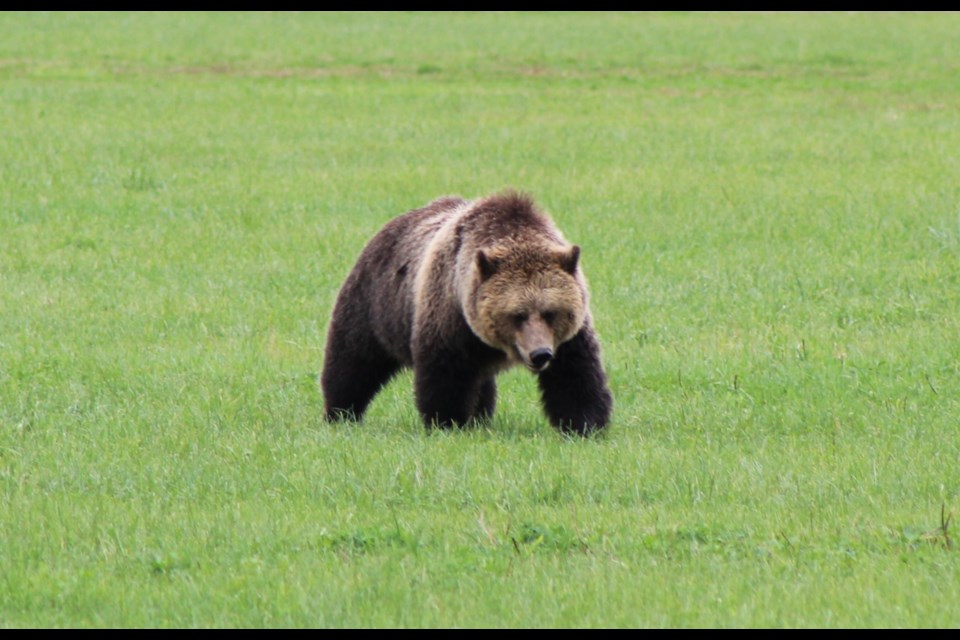Having grown up in the Pemberton Meadows area, the Coast to Cascades Grizzly Bear Initiative’s Erica Van Loon lends a unique insight into the current situation on the ground.
Families in Pemberton Meadows say they are , after children in the area have reportedly come face to face with the bear while playing outside. Residents say they are worried it is only a matter of time before someone is seriously hurt or killed.
“For people who have kids or grandkids around, it certainly is a concern,” Van Loon said.
“I’ve grown up in the Meadows, so I’ve seen the shift as well over the last few years. Grizzly bears have started to move down to the valley floor more, and have a constant presence here throughout the season. Whereas typically, they would use it as an activity corridor and pop through before returning to their habitat further up in the Alpine, or where we don’t typically see them.”
But there likely isn’t one sole reason grizzlies are staying in the valley longer.
“It’s hard to equate it to just one thing,” Van Loon said. “Some of it is because the population is increasing. It’s doing a lot better. When people originally settled in the valley, there was tons of fear around bears. They got shot most often. We are starting to see them come back. There’s also the role of food sources on the valley floor.”
While human food sources are of course a concern, bears are constantly attracted to crops in the Pemberton Meadows area, Van Loon added—everything from blueberry bushes to carrots.
“Where there is good food, bears will tend to stay longer as well,” she said.
Not many grizzlies are currently collared in the region, which is the main way of tracking the population. There are about nine different grizzlies that aren’t always present in the valley—and the aforementioned resident mom and cubs, which tend to stick around throughout the season.
Unfortunately, the female grizzly has become attached to food sources in the valley.
“She has gotten used to the food sources we have here,” said Van Loon. “We grow carrots on our farm. When she first came into the valley about three or four years ago, she got a taste for those crops and got attached. That’s why she has continuously stuck around. It could also be other things like male dominance issues as well.”
Learning to coexist with bears can be a long process that requires compromise. Coast to Cascades is working with Pemberton Meadows farmers and landowners to put up electric fences to keep bears out of their crops.
Living with the female grizzly has been a challenge for many in the area.
“It’s been a learning curve for all residents over the past few years to learn how to live with her,” Van Loon said. “There are different fear levels and tolerance levels for different people. It varies somewhat. It’s a tricky one. Once they get into human food, there’s a risk of bears becoming food-conditioned where they equate humans with high-quality food sources. It’s a huge concern. As bears go down that route, there are higher issues of conflict.”
Van Loon’s grandparents came from the Netherlands and settled in the valley. Back then, grizzly bears were much more at large.
“Even just from stories, there were more grizzly bears present back then,” she said. “Most of this valley has now been cleared for agriculture use. Speaking to local First Nations communities, we know that the grizzlies have always been here and they’ve always interacted with them. It’s an incredibly high-value species within Lil’wat Nation culture, both culturally and spiritually.
“Lil’wat Nation have true stories of co-existence that go back thousands of years. It’s a really beautiful relationship that a lot of people can learn from.”
Grizzly bears were hunted in countries all over the world, changing the landscape forever. Van Loon noted grizzly populations used to stretch all the way down to Mexico.
“The entirety of the United States population has been depleted,” she said.
“It’s hard for some people to face the reality of it as the population slowly rises again. Bears are coming back. People will inevitably need to learn how to live with them, and about the species in general. As humans, we have a responsibility to do this because we live in this amazing place. Bears should be a part of that landscape. It takes a lot of time and educational initiatives.”




